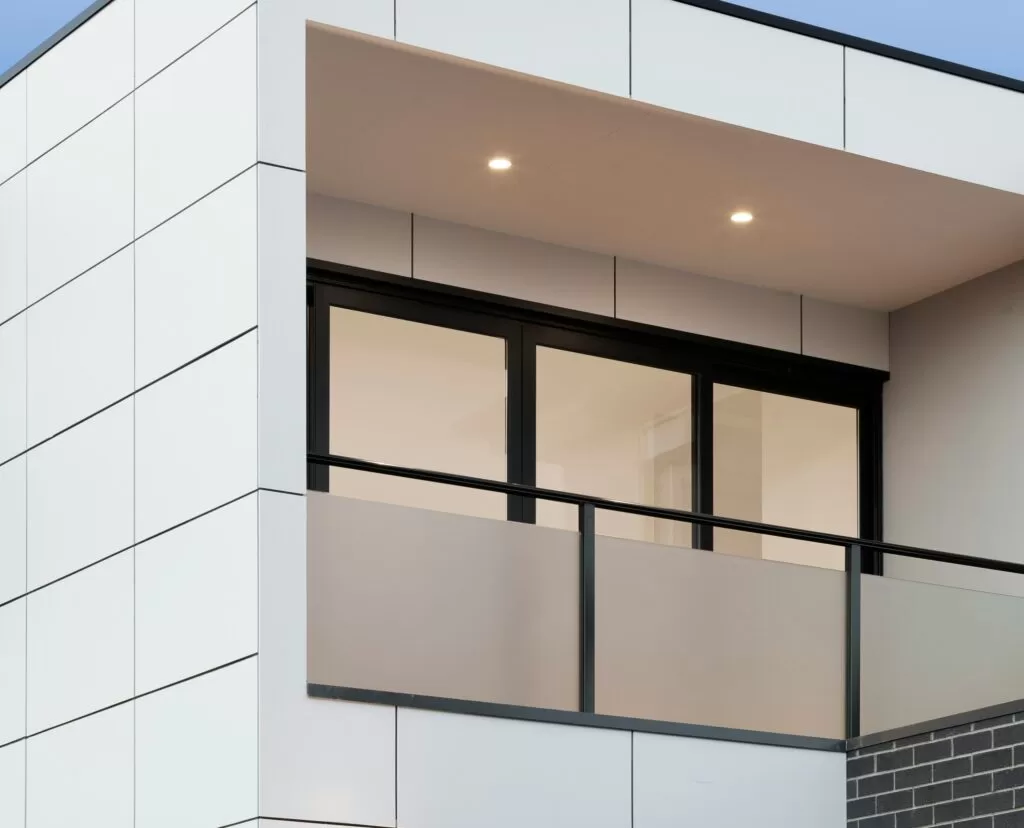Happy Eco News Solar Railing System: A Game-Changer for Building-Integrated Solar Solutions
Reading Time: 4 minutes
Mitrex’s innovative solar railing system combines functionality and aesthetics, offering a sustainable solution for balconies and walkways.
Canadian building-integrated photovoltaic (BIPV) manufacturer Mitrex has launched its solar railing system, a cutting-edge product designed for both residential and commercial applications. The SolarRail system, available in semi-transparent and opaque models, is designed for use on balconies, walkways, and other architectural features, making it suitable for both retrofit and new-build projects.
The solar railing system is part of Mitrex’s broader portfolio of BIPV products, which aim to integrate solar technology into building designs seamlessly. By combining functionality with aesthetics, the SolarRail system offers a sustainable solution that enhances energy efficiency without compromising on design.
The SolarRail system is available in two models: a 60% transparent version and an opaque version. The transparent model produces 105 W of power and is based on 20 bifacial monocrystalline solar cells with a 50 mm gap between cells. The opaque model, with 72 cells and 2 mm gaps, delivers 390 W of power.
Both models measure 1,219 mm x 996 mm and weigh 38 kg, with an overall thickness of 51 mm. The module efficiency ranges from 22.0% to 22.5%, making it a highly efficient option for building-integrated solar solutions. The system is delivered with support bars, concealed cabling, and a choice of mounting systems, including a post-and-cap design or a base shoe system.
The opaque solar railing system can be customized with various colors and finishes, such as woodgrain patterns or designs that mimic natural materials like granite, stucco, red brick, slate, limestone, and marble. This customization allows architects and builders to incorporate solar technology into their designs without sacrificing aesthetic appeal.
The SolarRail system is built to last, with a low-iron glass facing (3.2 mm thick) and a 6 mm thick rear glass. It has a maximum system voltage of 1,000 V and comes with a 25-year material warranty. The performance warranty guarantees 80% of the initial performance after 25 years, ensuring long-term reliability.

The system also meets stringent safety and performance standards, including a Type II fire rating, an IP68 junction box, and Staubli MC4 connections. These features make the solar railing system a safe and durable option for a variety of applications.
The solar railing system is versatile and can be installed on balconies of mid-to-high-rise buildings, raised walkways in commercial and public buildings, and other architectural features. Its ability to blend seamlessly into building designs makes it an attractive option for architects and developers looking to incorporate renewable energy solutions into their projects.
One of the solar railing system’s key benefits is its suitability for retrofit and new-build projects. For retrofits, the system can be installed on existing balconies or walkways, providing a sustainable upgrade without the need for significant structural changes. The system can be integrated into the design from the outset for new builds, ensuring a cohesive and energy-efficient solution.
Mitrex’s solar railing system is part of a growing trend in building-integrated photovoltaics, which aims to combine solar technology with architectural design. By integrating solar panels into building elements like railings, façades, and noise barriers, BIPV solutions offer a way to generate renewable energy without compromising on aesthetics.
Founded in 2019 in Toronto, Ontario, Mitrex has quickly established itself as a leader in the BIPV industry. The company’s product portfolio includes solar façade systems, noise-absorbing barrier systems, and now the SolarRail system, all designed to meet the needs of modern architecture and sustainable construction.
Building-integrated photovoltaics (BIPV) represent a significant shift in how we think about renewable energy and architecture. Traditional solar panels are often added to buildings as an afterthought, but BIPV solutions like the solar railing system are designed to be part of the building itself. This approach not only enhances the aesthetic appeal of solar technology but also maximizes its potential by integrating it into the building’s structure.
The solar railing system is a prime example of this approach. By replacing traditional railings with solar panels, the system generates renewable energy while maintaining the functionality and appearance of a standard railing. This dual-purpose design makes it ideal for urban environments where space is limited, and aesthetics are a priority.
The solar railing system offers significant environmental and economic benefits. By generating renewable energy on-site, the system reduces the building’s reliance on grid electricity, lowering energy costs and carbon emissions. This is particularly important in urban areas, where buildings account for a large portion of energy consumption and greenhouse gas emissions.
In addition to its environmental benefits, the solar railing system can also provide economic advantages. By generating electricity, the system can offset energy costs, providing a return on investment over time. The system’s durability and long warranty period further enhance its economic appeal, ensuring that it remains a cost-effective solution for years to come.
While the solar railing system offers many benefits, there are also challenges to its widespread adoption. One of the main challenges is the initial cost, which can be higher than traditional railings. However, the long-term savings and environmental benefits can offset this initial investment, making it a viable option for many projects.
Another challenge is the need for specialized installation and maintenance. The solar railing system requires skilled professionals to install and maintain it, which can add to the overall cost. However, as the demand for BIPV solutions grows, the availability of qualified professionals will likely increase, reducing this barrier over time.
Mitrex’s solar railing system represents a significant advancement in building-integrated solar technology. Combining functionality, durability, and aesthetic appeal, the SolarRail system offers a sustainable solution for balconies, walkways, and other architectural features. As the demand for renewable energy solutions continues to grow, innovations like the solar railing system will play a crucial role in shaping the future of sustainable architecture.
The post Solar Railing System: A Game-Changer for Building-Integrated Solar Solutions appeared first on Happy Eco News.
